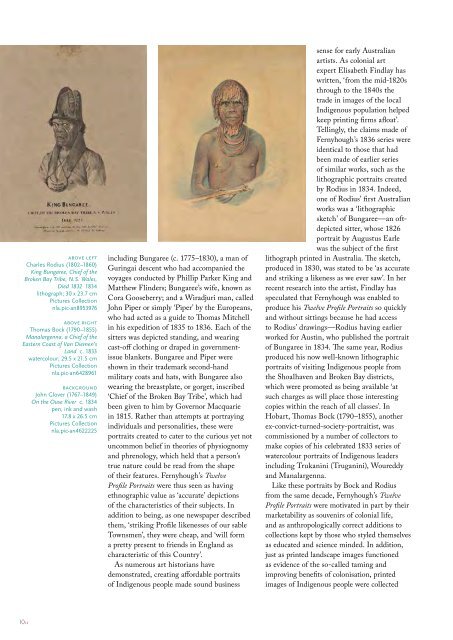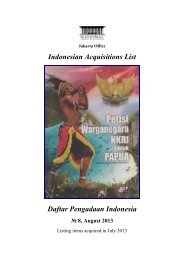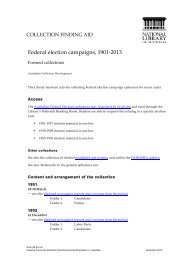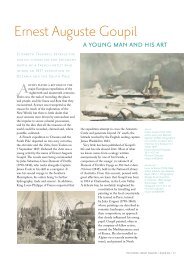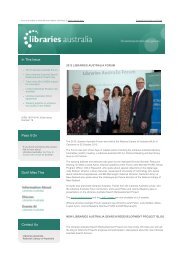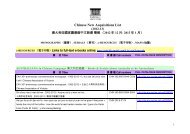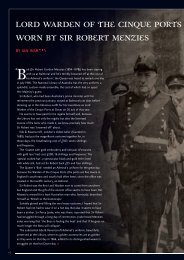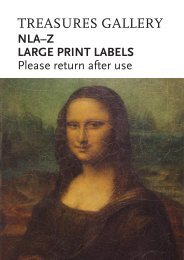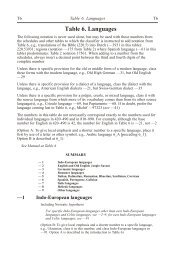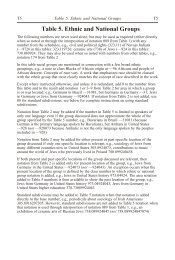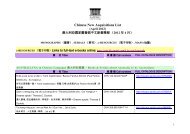Download the National Library Magazine - National Library of ...
Download the National Library Magazine - National Library of ...
Download the National Library Magazine - National Library of ...
You also want an ePaper? Increase the reach of your titles
YUMPU automatically turns print PDFs into web optimized ePapers that Google loves.
above left<br />
Charles Rodius (1802–1860)<br />
King Bungaree, Chief <strong>of</strong> <strong>the</strong><br />
Broken Bay Tribe, N.S. Wales,<br />
Died 1832 1834<br />
lithograph; 30 x 23.7 cm<br />
Pictures Collection<br />
nla.pic-an8953976<br />
above right<br />
Thomas Bock (1790–1855)<br />
Manalargenna, a Chief <strong>of</strong> <strong>the</strong><br />
Eastern Coast <strong>of</strong> Van Diemen’s<br />
Land c. 1833<br />
watercolour; 29.5 x 21.5 cm<br />
Pictures Collection<br />
nla.pic-an6428961<br />
background<br />
John Glover (1767–1849)<br />
On <strong>the</strong> Ouse River c. 1834<br />
pen, ink and wash<br />
17.8 x 26.5 cm<br />
Pictures Collection<br />
nla.pic-an4622225<br />
including Bungaree (c. 1775–1830), a man <strong>of</strong><br />
Guringai descent who had accompanied <strong>the</strong><br />
voyages conducted by Phillip Parker King and<br />
Mat<strong>the</strong>w Flinders; Bungaree’s wife, known as<br />
Cora Gooseberry; and a Wiradjuri man, called<br />
John Piper or simply ‘Piper’ by <strong>the</strong> Europeans,<br />
who had acted as a guide to Thomas Mitchell<br />
in his expedition <strong>of</strong> 1835 to 1836. Each <strong>of</strong> <strong>the</strong><br />
sitters was depicted standing, and wearing<br />
cast-<strong>of</strong>f clothing or draped in governmentissue<br />
blankets. Bungaree and Piper were<br />
shown in <strong>the</strong>ir trademark second-hand<br />
military coats and hats, with Bungaree also<br />
wearing <strong>the</strong> breastplate, or gorget, inscribed<br />
‘Chief <strong>of</strong> <strong>the</strong> Broken Bay Tribe’, which had<br />
been given to him by Governor Macquarie<br />
in 1815. Ra<strong>the</strong>r than attempts at portraying<br />
individuals and personalities, <strong>the</strong>se were<br />
portraits created to cater to <strong>the</strong> curious yet not<br />
uncommon belief in <strong>the</strong>ories <strong>of</strong> physiognomy<br />
and phrenology, which held that a person’s<br />
true nature could be read from <strong>the</strong> shape<br />
<strong>of</strong> <strong>the</strong>ir features. Fernyhough’s Twelve<br />
Pr<strong>of</strong>ile Portraits were thus seen as having<br />
ethnographic value as ‘accurate’ depictions<br />
<strong>of</strong> <strong>the</strong> characteristics <strong>of</strong> <strong>the</strong>ir subjects. In<br />
addition to being, as one newspaper described<br />
<strong>the</strong>m, ‘striking Pr<strong>of</strong>ile likenesses <strong>of</strong> our sable<br />
Townsmen’, <strong>the</strong>y were cheap, and ‘will form<br />
a pretty present to friends in England as<br />
characteristic <strong>of</strong> this Country’.<br />
As numerous art historians have<br />
demonstrated, creating affordable portraits<br />
<strong>of</strong> Indigenous people made sound business<br />
sense for early Australian<br />
artists. As colonial art<br />
expert Elisabeth Findlay has<br />
written, ‘from <strong>the</strong> mid-1820s<br />
through to <strong>the</strong> 1840s <strong>the</strong><br />
trade in images <strong>of</strong> <strong>the</strong> local<br />
Indigenous population helped<br />
keep printing firms afloat’.<br />
Tellingly, <strong>the</strong> claims made <strong>of</strong><br />
Fernyhough’s 1836 series were<br />
identical to those that had<br />
been made <strong>of</strong> earlier series<br />
<strong>of</strong> similar works, such as <strong>the</strong><br />
lithographic portraits created<br />
by Rodius in 1834. Indeed,<br />
one <strong>of</strong> Rodius’ first Australian<br />
works was a ‘lithographic<br />
sketch’ <strong>of</strong> Bungaree—an <strong>of</strong>tdepicted<br />
sitter, whose 1826<br />
portrait by Augustus Earle<br />
was <strong>the</strong> subject <strong>of</strong> <strong>the</strong> first<br />
lithograph printed in Australia. The sketch,<br />
produced in 1830, was stated to be ‘as accurate<br />
and striking a likeness as we ever saw’. In her<br />
recent research into <strong>the</strong> artist, Findlay has<br />
speculated that Fernyhough was enabled to<br />
produce his Twelve Pr<strong>of</strong>ile Portraits so quickly<br />
and without sittings because he had access<br />
to Rodius’ drawings—Rodius having earlier<br />
worked for Austin, who published <strong>the</strong> portrait<br />
<strong>of</strong> Bungaree in 1834. The same year, Rodius<br />
produced his now well-known lithographic<br />
portraits <strong>of</strong> visiting Indigenous people from<br />
<strong>the</strong> Shoalhaven and Broken Bay districts,<br />
which were promoted as being available ‘at<br />
such charges as will place those interesting<br />
copies within <strong>the</strong> reach <strong>of</strong> all classes’. In<br />
Hobart, Thomas Bock (1790–1855), ano<strong>the</strong>r<br />
ex-convict-turned-society-portraitist, was<br />
commissioned by a number <strong>of</strong> collectors to<br />
make copies <strong>of</strong> his celebrated 1833 series <strong>of</strong><br />
watercolour portraits <strong>of</strong> Indigenous leaders<br />
including Trukanini (Truganini), Woureddy<br />
and Manalargenna.<br />
Like <strong>the</strong>se portraits by Bock and Rodius<br />
from <strong>the</strong> same decade, Fernyhough’s Twelve<br />
Pr<strong>of</strong>ile Portraits were motivated in part by <strong>the</strong>ir<br />
marketability as souvenirs <strong>of</strong> colonial life,<br />
and as anthropologically correct additions to<br />
collections kept by those who styled <strong>the</strong>mselves<br />
as educated and science minded. In addition,<br />
just as printed landscape images functioned<br />
as evidence <strong>of</strong> <strong>the</strong> so-called taming and<br />
improving benefits <strong>of</strong> colonisation, printed<br />
images <strong>of</strong> Indigenous people were collected<br />
10::


